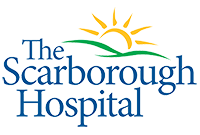Rising to the challenge of changing healthcare needs
Healthcare is rapidly developing: the needs of patients, families, and the system of care itself are constantly shifting. Evolving to meet these needs is integral to The Scarborough Hospital’s commitment to continue to deliver high-quality, compassionate care.

To achieve this vision, TSH has implemented a strategic plan around four key commitments:
- We will work closely with the people we serve to continually improve what we do and how we do it.
- Working with other service providers – the partners who also provide care – we will deliver those programs and services in more coordinated and responsive ways.
- Within our own team, we will keep developing leading programs and services to better serve the needs of our community.
- We will focus relentlessly on excellence and draw on the best ideas, so that everything we do continually strengthens a healthy hospital and a healthy community.
Reinforcing these commitments are four strategic directions focusing the hospital over the next four years:
Patients as Partners: We will engage patients and families in a meaningful way to enhance their experience, promote shared care, and improve quality of care. Innovation and Learning: We will enhance our team’s capacity for advanced learning, innovation, and creativity. Integrated Care Networks: We will collaborate with other service providers, patients, and their families to co-design accessible and coordinated services. Quality and Sustainability: We will deliver quality and sustainable services by designing and adopting evidence-based practices.
Achieving high-quality, compassionate care through technology, innovation and research
To enable progress on these directions and commitments, TSH has developed a strong culture of collaboration and innovation; investing in research, technology and education through an affiliation with the University of Toronto.
Such investment in academic collaboration and quality improvement has recently lead to the hospital's successful first application of healthcare simulation software with SIMUL8.
Using a simulation model developed by Carly Henshaw, Improvement Facilitator at TSH and an Industrial Engineering graduate from the University of Toronto, TSH has not only improved patient transportation department turnaround times, but also identified more than $50,000 per annum in cost savings by validating that the hiring of additional staff was not necessary.
With hospital porters playing an essential role in enabling care to run efficiently through the transportation of people, equipment and supplies, these improvements also had a positive impact on patient safety and service satisfaction.
Discover how TSH achieved these results using SIMUL8
